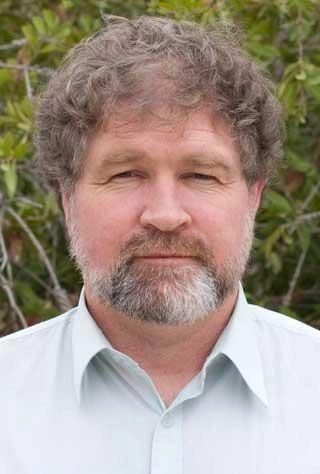Alec Marr’s life for nature: how it all began
From 1997 to 2010 Alec led The Wilderness Society (TWS) in Australia, turning it into Australia’s largest nature protection organisation. Under his leadership, TWS experienced a period of unprecedented organisational growth and campaign success, delivering protection for over 32 million hectares of Australia’s natural heritage.
But let’s not get ahead of ourselves. In this story, we're going back to how it all started.
I think I was lucky to grow up at the right time when there was still an enormous amount of easily accessible bush wherever anyone lived in Australia. The population was way smaller back in those days so you didn't have these endless suburbs of houses.
You know you'd have small suburbs surrounded by bush, and so for us kids, our playground was the bush.
So that's what we did. Where I spent most of my time growing up was, we were the last street in the suburb, and then there was 50 mile of undeveloped coast. We could do anything. No one cared. We did everything from, riding motorbikes, to fishing or walking or, you know, we could do anything there, because no one cared. We were just out in the bush and it was a five-minute walk, and off you went.
So that's really where I spent most of my time growing up. Then our family holidays, ironically, were camping holidays to the remotest places we could find, which in later years would become central campaign areas for the Wilderness Society.
So places like the Gulf of Carpenteria or Cape York. When we weren't wandering around the bush near our homes, our idea of a good holiday was to go into some very remote place and hang out there for a month at a time, coming to town, beat the locals at pool at the pub, go back out again.
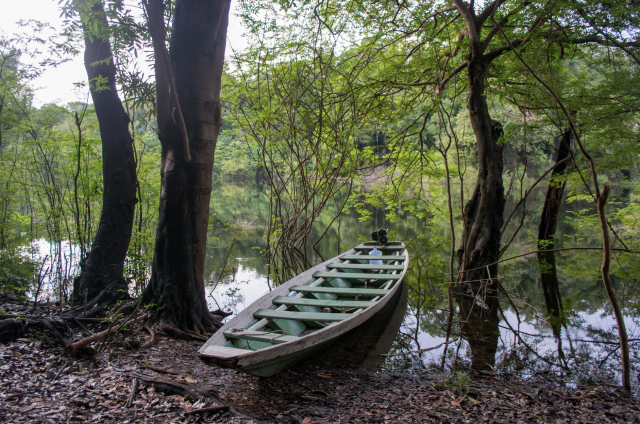
The Aussie brickie who rafted the Amazon.
I sort of grew up on bad American Second World War movies and nature documentaries.
So of course, looking at all these fantastic places around the world with all these exotic animals and birds and things was very exciting, but every single one of the documentaries ended with some terrible problem that was about to descend on this wonderful area.
So by the time I was about 20, I thought that there's probably not much in the way of wilderness left in the world, probably not a lot of adventure left in the world. So I decided that I should at least try and get to one of these wild places while I could do it. At the time I was a bricklayer, I made plenty of money, so I saved up and I took myself off to the Amazon in 1980.
I took myself off to the remotest parts of the Amazon I could find.
Quickly I realized that the thing that made the Amazon so special, how big it was, was also the thing that made it easy to exploit and therefore destroy its wilderness values because, you know, you could get an ocean-going ship two and a half thousand miles up from the mouth of the Amazon.
It's so big. And wherever you could get ships, wherever you could get roads, the Amazon was no longer wild. It was just another poor area in a poor part of South America.
But if you really went out of your way and got in dug-out canoes and spent time going where only dug out canoes can go, then instantly it was all exactly like all the books you read as a kid. So I spent six months hanging out in different parts of the Amazon, Ecuador, Peru and Bolivia.
“I thought that there's probably not much in the way of wilderness left in the world, probably not a lot of adventure left in the world. And so I decided that I should at least try and get to one of these wild places while I could.”
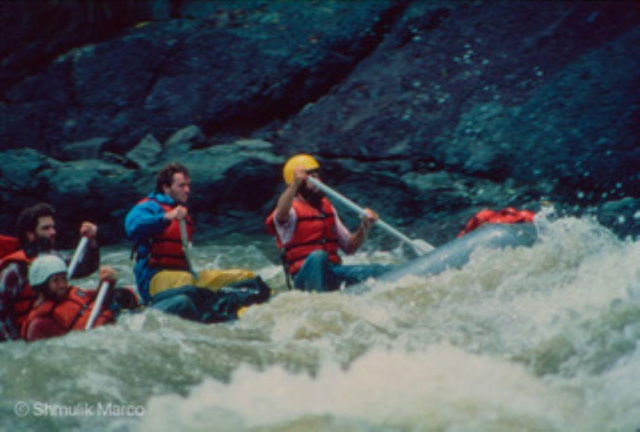
Drawn to Tasmania
After he got back to Australia, Alec ended up spending some time in New Zealand and Cape York. But when he heard about the Franklin river blockade happening down in Tasmania, he decided that’s where he needed to be.
By the time he arrived in Tasmania he was dirt poor after spending all his money mountaineering in New Zealand, so he had to spend a few months working. As fate would have it, once he had enough cash saved up, the blockade was already finished.
Despite the ironic turn of events, Alec ended up staying in Tasmania, fuelling his adventure spirit with whitewater rafting, rock climbing, bushwalking and vertical caving. But the more he started to explore the wild nature of Tasmania, the more he also got first hand accounts of its destruction.
“Every time I came out of one of these wilderness areas, we'd have to drive in and out of a bloody clearfell logging coupe. And it just really got to me.”

First encounter with the Wilderness Society
Driven by his love for the natural world and the devastation he was witnessing, Alec decided he wanted to do something about it. He walked into the office of the people he thought would be good at saving things, the Wilderness Society.
“I went in there and volunteered and started at the very lowest possible rung that you could […] I was just literally someone who didn't even make tea for people in those days”.
The environment Minister, Barry Cohen, had recommended a lot of forest be protected, and the Wilderness society were going to hold a support rally to say "good on you Barry, we support you, we love you, and all that stuff".
Without much experience in the field of environmental campaigning, Alec started off having to learn a lot of new things, and it wasn't always perfect at the first try.
“Jill McCulloch said to me, ‘paint some placards’. It's one of the few things I should be able to do. She leaves me alone, so off I go. Two hours later, I've painted a dozen placards. But, you know, the only placards I'd ever seen were at the cricket. So they look like cricket placards. And they said, ‘Beauty Bazza!’ 'Cohens got guts!' and all this sort of stuff. And Jill McCulloch came out and she was appalled, she said they were disgusting and inappropriate. So my second job at the Wilderness Society was to paint over my first job. That was my day. Not an auspicious beginning. But things did improve."
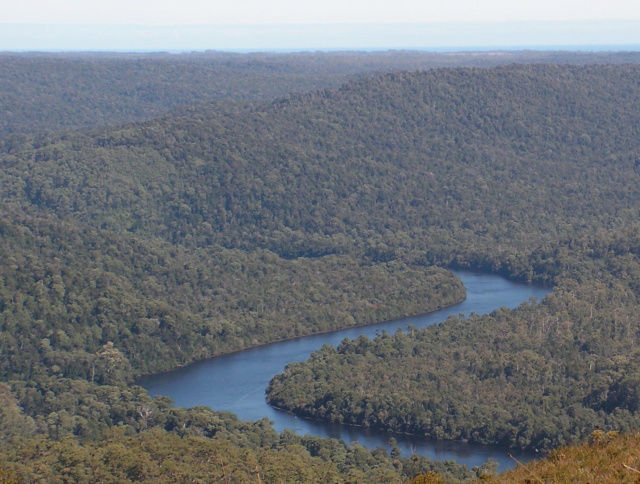
Despite some small bumps in the road, Alec stayed around at the Wilderness Society. More on that in the next story on Alec Marr's life for nature.
From 1997 to 2010 Alec led The Wilderness Society (TWS) in Australia, turning it into Australia’s largest nature protection organisation. Under his leadership, TWS experienced a period of unprecedented organisational growth and campaign success, delivering protection for over 32 million hectares of Australia’s natural heritage.
But let’s not get ahead of ourselves. In this story, we're going back to how it all started.
I think I was lucky to grow up at the right time when there was still an enormous amount of easily accessible bush wherever anyone lived in Australia. The population was way smaller back in those days so you didn't have these endless suburbs of houses.
You know you'd have small suburbs surrounded by bush, and so for us kids, our playground was the bush.
So that's what we did. Where I spent most of my time growing up was, we were the last street in the suburb, and then there was 50 mile of undeveloped coast. We could do anything. No one cared. We did everything from, riding motorbikes, to fishing or walking or, you know, we could do anything there, because no one cared. We were just out in the bush and it was a five-minute walk, and off you went.
So that's really where I spent most of my time growing up. Then our family holidays, ironically, were camping holidays to the remotest places we could find, which in later years would become central campaign areas for the Wilderness Society.
So places like the Gulf of Carpenteria or Cape York. When we weren't wandering around the bush near our homes, our idea of a good holiday was to go into some very remote place and hang out there for a month at a time, coming to town, beat the locals at pool at the pub, go back out again.

The Aussie brickie who rafted the Amazon.
I sort of grew up on bad American Second World War movies and nature documentaries.
So of course, looking at all these fantastic places around the world with all these exotic animals and birds and things was very exciting, but every single one of the documentaries ended with some terrible problem that was about to descend on this wonderful area.
So by the time I was about 20, I thought that there's probably not much in the way of wilderness left in the world, probably not a lot of adventure left in the world. So I decided that I should at least try and get to one of these wild places while I could do it. At the time I was a bricklayer, I made plenty of money, so I saved up and I took myself off to the Amazon in 1980.
I took myself off to the remotest parts of the Amazon I could find.
Quickly I realized that the thing that made the Amazon so special, how big it was, was also the thing that made it easy to exploit and therefore destroy its wilderness values because, you know, you could get an ocean-going ship two and a half thousand miles up from the mouth of the Amazon.
It's so big. And wherever you could get ships, wherever you could get roads, the Amazon was no longer wild. It was just another poor area in a poor part of South America.
But if you really went out of your way and got in dug-out canoes and spent time going where only dug out canoes can go, then instantly it was all exactly like all the books you read as a kid. So I spent six months hanging out in different parts of the Amazon, Ecuador, Peru and Bolivia.
“I thought that there's probably not much in the way of wilderness left in the world, probably not a lot of adventure left in the world. And so I decided that I should at least try and get to one of these wild places while I could.”

Drawn to Tasmania
After he got back to Australia, Alec ended up spending some time in New Zealand and Cape York. But when he heard about the Franklin river blockade happening down in Tasmania, he decided that’s where he needed to be.
By the time he arrived in Tasmania he was dirt poor after spending all his money mountaineering in New Zealand, so he had to spend a few months working. As fate would have it, once he had enough cash saved up, the blockade was already finished.
Despite the ironic turn of events, Alec ended up staying in Tasmania, fuelling his adventure spirit with whitewater rafting, rock climbing, bushwalking and vertical caving. But the more he started to explore the wild nature of Tasmania, the more he also got first hand accounts of its destruction.
“Every time I came out of one of these wilderness areas, we'd have to drive in and out of a bloody clearfell logging coupe. And it just really got to me.”

First encounter with the Wilderness Society
Driven by his love for the natural world and the devastation he was witnessing, Alec decided he wanted to do something about it. He walked into the office of the people he thought would be good at saving things, the Wilderness Society.
“I went in there and volunteered and started at the very lowest possible rung that you could […] I was just literally someone who didn't even make tea for people in those days”.
The environment Minister, Barry Cohen, had recommended a lot of forest be protected, and the Wilderness society were going to hold a support rally to say "good on you Barry, we support you, we love you, and all that stuff".
Without much experience in the field of environmental campaigning, Alec started off having to learn a lot of new things, and it wasn't always perfect at the first try.
“Jill McCulloch said to me, ‘paint some placards’. It's one of the few things I should be able to do. She leaves me alone, so off I go. Two hours later, I've painted a dozen placards. But, you know, the only placards I'd ever seen were at the cricket. So they look like cricket placards. And they said, ‘Beauty Bazza!’ 'Cohens got guts!' and all this sort of stuff. And Jill McCulloch came out and she was appalled, she said they were disgusting and inappropriate. So my second job at the Wilderness Society was to paint over my first job. That was my day. Not an auspicious beginning. But things did improve."

Despite some small bumps in the road, Alec stayed around at the Wilderness Society. More on that in the next story on Alec Marr's life for nature.
You might like...

Intro to Campaign Strategy: Tools to Save Nature
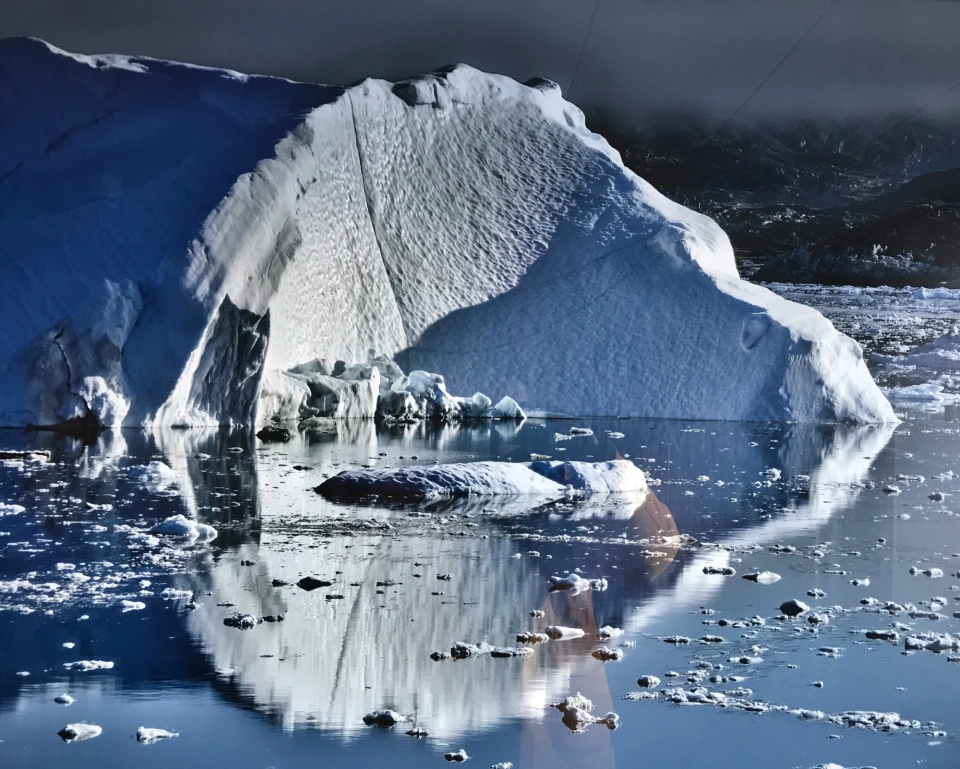
A campaigner's life: taking the opportunities

Mastering Campaign Strategy: Your Power to Protect Our Planet

Let the Franklin Flow - Saving a Wild River
Newsletter
Sign up to keep in touch with articles, updates, events or news from Kuno, your platform for nature

